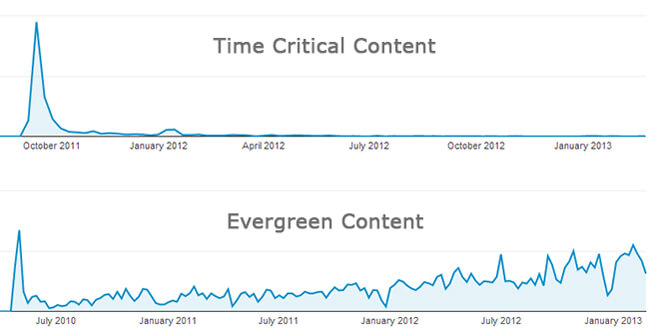The value of content isn’t always apparent to businesses until they drop down in Google search to page 50 and want to know why. At that point, the importance of quality marketing content becomes very clear.
If you’re on a tight budget, investing in professional talent to write copy, blog posts, articles, emails and even tweets may seem like a waste of money. However, it’s well worth the cost once you realize what’s at stake and the return on investment that professional, quality marketing content can bring to your marketing and business.
The Anatomy of Content
Think of content as literally everything in your marketing toolbox: tweets, blog posts, page copy, graphics, infographics, white papers, ebooks, emails, and even blog comments should all be considered as part of your inbound marketing content strategy. Your words tell your story. If it’s a good story, you will get a lot of clicks and a higher conversion rate. That’s what makes for quality marketing content and builds a strong brand.
Why Content ROI is Hard to Measure
Content doesn’t always translate directly into sales in the short run. It’s a long game, with a goal of building an engaged audience and loyal customers based on trust.
Some content is evergreen and will still be relevant even after two years, and some is timely and will be outdated day after tomorrow. That’s the nature of the web, especially if you’re in a business connected to technology.
Evergreen content generates buzz when it’s first published and continues to attract traffic over a long period of time. To boost the value of evergreen content, make it authoritative, informative, and long. Examples of evergreen content include how-tos and tutorials, historical stories, tips, and answers to eternal questions like, “How do I tie a tie?”
Topics that aren’t evergreen discuss what’s happening right now. Not many people are still searching for everything you need to know about the iPhone 4, but in August 2012, everyone wanted to know. Digital Trends enjoyed a nice boost in traffic from their in-depth article, but it was old news by September, when Apple released the iPhone 5.
The ROI of content is not as straightforward as “if I spend X dollars on this, I can expect to generate X in return.” And yet, in a Marketo survey, marketing professionals answered that their content “positively impacted brand awareness, engagement, thought leadership, SEO/web traffic, lead quality, and lead quantity.”
5 ROI Metrics You Can Track
While you can’t measure the full ROI of evergreen content until much time has passed, you can certainly track the impact of a new post or article. The top five metrics to evaluate quality marketing content are:
- Number of shares on social media – if your content resonates with your audience, they’ll be eager to recommend it to others
- Time spent on the page – Did visitors read or just skim and move on? Or worse…click and bounce?
- Conversions – Did visitors click a CTA and become a lead or a customer?
- Original and return traffic – it’s useful to know how many new visitors you’re attracting and how many are coming back for more.
- Number of comments – It’s a hotly contested topic, but Neil Patel did the math in his Quick Social post, and found comments actually do increase search traffic, even if by a smaller percentage than he had hoped.
How to Improve Your Content ROI
The return on content requires patience; it won’t happen overnight. Your return will only be as good as the effort you put into it. You must deliver a steady stream of high quality marketing content, and then give it the attention it needs to succeed by promoting the content across social media and other channels. This will build your audience organically as people discover your site and share your content with friends. Of course, you can also use content to improve the results of your paid marketing initiatives.
Once your content is live, measure and test. If you’ve produced a great article, but the title is boring, it may not get the hits it deserves. Similarly, email open rates will tell you if your email subject lines and CTAs are effective. Try A/B testing with different wording on small groups from your customer base to see what plays best. And by all means, keep an eye on what your competitors are doing (Rival IQ is great for this).

Focus on Content that Resonates with Your Audience
Metrics are key. Use metrics to determine what content really speaks to your customers. This is really valuable data that can help you create a strong content marketing strategy.
Are you measuring your content ROI? What metrics are you using? Let me know!





